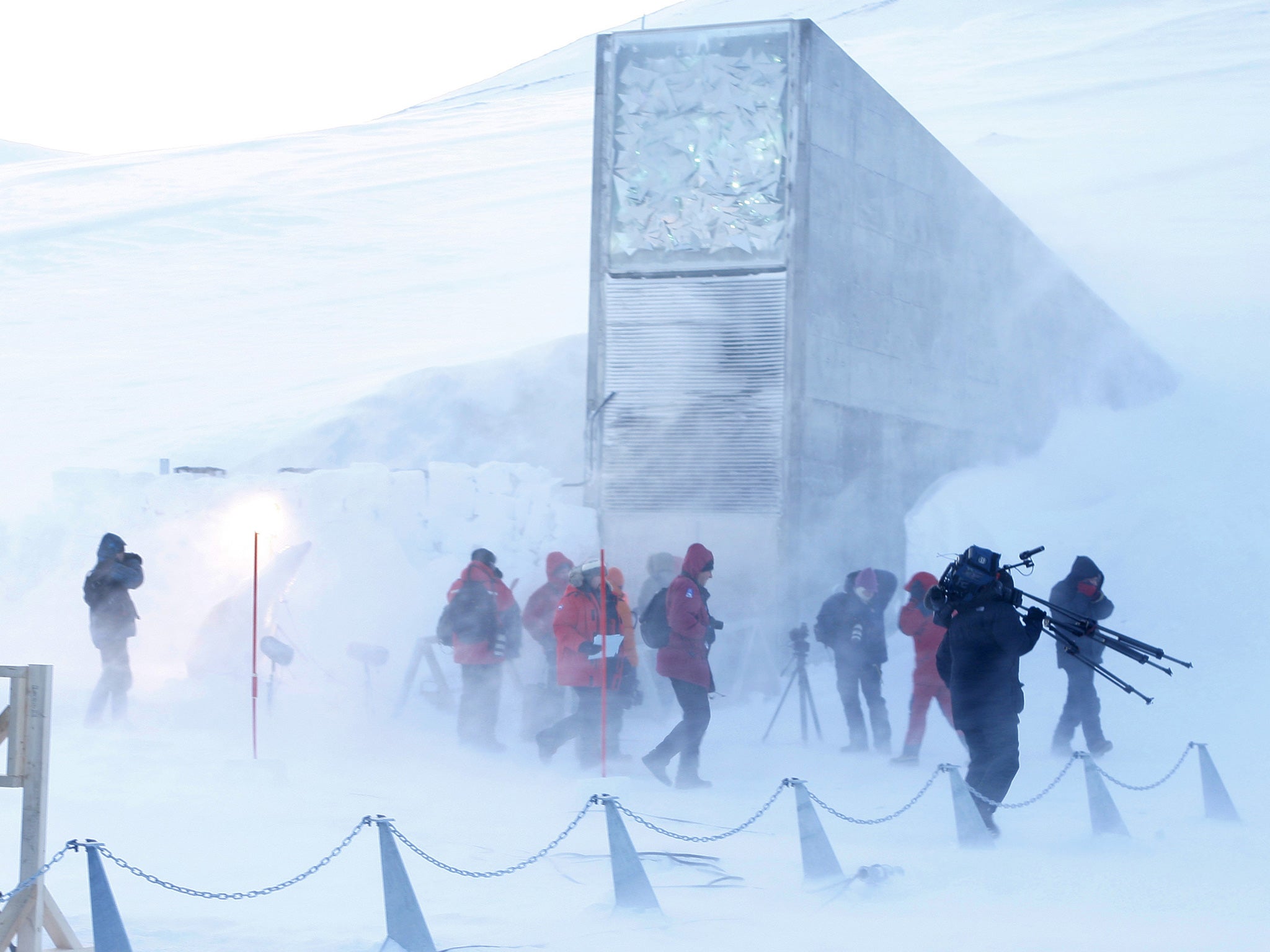‘Doomsday vault’ town warming quicker than any other on Earth, climate scientist says
Temperatures have risen three times faster than the global average putting seeds at risk

Your support helps us to tell the story
From reproductive rights to climate change to Big Tech, The Independent is on the ground when the story is developing. Whether it's investigating the financials of Elon Musk's pro-Trump PAC or producing our latest documentary, 'The A Word', which shines a light on the American women fighting for reproductive rights, we know how important it is to parse out the facts from the messaging.
At such a critical moment in US history, we need reporters on the ground. Your donation allows us to keep sending journalists to speak to both sides of the story.
The Independent is trusted by Americans across the entire political spectrum. And unlike many other quality news outlets, we choose not to lock Americans out of our reporting and analysis with paywalls. We believe quality journalism should be available to everyone, paid for by those who can afford it.
Your support makes all the difference.The world’s northernmost settlement and home to what is known as the “Doomsday vault” – the subterranean Svalbard global seed vault which stores specimens of almost all the world’s seeds - is now believed to be the fastest-warming location on Earth, according to a new report.
Longyearbyen, on the Norwegian island of Svalbard, had an average temperature in Svalbard was -7.8C in 1900 but since then, it has risen by 3.7C – more than three times the global average rise of about 1°C.
Not only has it become significantly warmer, but wetter too, spelling trouble for the Doomsday vault as the seeds’ preservation depends on stable temperatures and bone-dry conditions.
“Svalbard is the ultimate failsafe for biodiversity of crops,” Marie Haga, the executive director of the Crop Trust told CNN.
The vault was opened in 2008. Its construction was funded by the Norwegian government and built in partnership with the country’s Crop Trust and is now a secure storage unit for around a million seed samples, representing over 13,000 years of agricultural history.
The location was chosen for good reason. Set deep within a mountain in a geologically inert area, there is a very low risk of earthquakes or volcanoes and similarly, Norway’s political system is also “very stable”, Ms Haga said.
The seeds are stored at -18C.
But the increasing likelihood of wet weather has already seen major upheaval at the site.
Following heavy rainfall in October 2016, the entrance to the seed vault became half-flooded and ended up freezing into huge blocks of ice.
None of the water reached the vault itself, but since then major works to replace the original steel entrance tunnel with a waterproof concrete one have been undertaken.
Inger Hanssen-Bauer, a senior researcher at the Norwegian Meteorological Institute and the editor of the report on Svalbard, said the reason the region is undergoing such massive temperature rises was because of accelerated Arctic warming.
This has occurred due to rising temperatures which reduce ice and snow cover. This means less sunlight is reflected off the surface of the Earth and more solar energy is absorbed by the darker surfaces that have been exposed.
Join our commenting forum
Join thought-provoking conversations, follow other Independent readers and see their replies
Comments